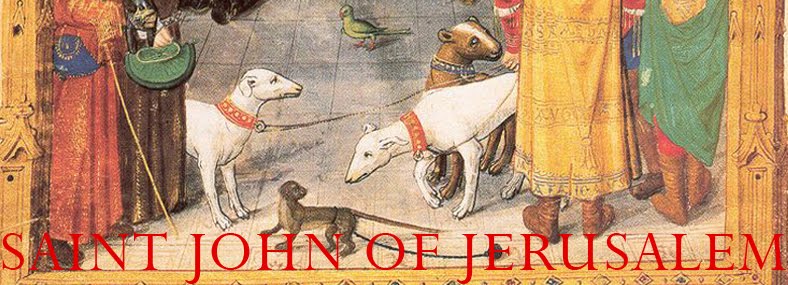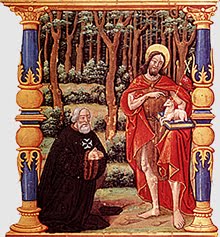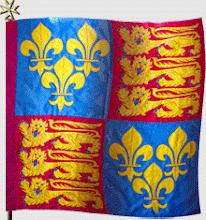MAUNDY THURSDAY I - MORNING REFLECTION
POPE BENEDICT XVI, while still Cardinal Ratzinger, makes the point in his book The Spirit of the Liturgy that the Exodus from Egypt of the Chosen
People is inseparably linked to worship. It is not primarily about a land to
live in, but a permanent place in which to render appropriate homage to God
according to His own mandates. Every time Moses confronts Pharaoh with God’s
demand to “let my people go”; it is always followed by this reason: that they may sacrifice, or make a feast to
Him in the wilderness. (Ex. 5-10) When they have reached it, the supremacy of
that aspect of this covenant is emphasised. The Book of Exodus itself devotes six
chapters (Ex. 35-40) to liturgical prescriptions. The essence of the Passover
is therefore indisputably liturgical. It is so in a sacrificial sense.
THE post-Exodus worship has been
described by Archbishop Fulton Sheen as “A veritable haemorrhage of blood”. It was
in and through the shedding of blood — the blood of the Passover lambs — that the
Jews achieved deliverance. Later, in the land where they came to dwell, they
continued to acknowledge this and rendered appropriate homage to God whose
power had saved them. It signified both absolute dependence and obedience. The
only true title deed to the territory they came to possess rested in their
fulfilment of those rituals of worship commanded in their sacred writings. In
the course of time a designated permanent sanctuary and a system of priesthood
came into existence. The synagogue services carried on throughout Israel, Judea
and the Jewish Diaspora in the first century AD had begun only in the 6th
century BC. That was the time of the exile in Babylon, when there was no Temple
and therefore no sacrifices. The synagogue services continued when they came
back to the Promised Land. But they were
always secondary and in addition to what was happening in the Temple. By the
time of Our Lord, this was still very much the case.
WE must bear this in mind when we
come to reflect upon the New Testament narrative of the Passion. The events of those days are seen by the
evangelists as fulfilling the prophecies of old and also of corresponding to the
rituals being carried on simultaneously in the Jewish festival of the Passover.
For the Gospel writers, as for all the Jewish converts to Christ, those rites
were now seen as imperfect and temporary substitutes for the true and the real
perfection of the ultimate propitiation, that of God Himself in the human
nature of the man, Jesus of Nazareth. The
Fathers of the Church later developed this theme of completion and realisation.
Pope Leo the Great, preaching in the fifth century expresses it in the
following words “ Lord, you drew all
things to yourself so that all the nations everywhere in their dedication to
you might celebrate in a full, clear sacramental rite what was done only in the
Jewish temple and in signs and shadows.”[1] What
happened in Holy Week is definitive of everything that follows from the
Christian perspective on Christ and the Church. She wants us to be in no doubt
that the events of these days are of paramount importance. To commemorate and
celebrate them is to become involved with the sacramental sources of the
Church’s very existence. The Holy Week liturgy is the Church ceremonially
opening the divine charters of her foundation and inviting us all to see and
verify her claims to be and to do what Christ intended and initiated.
THE Gospels, coupled with extracts
from the earliest instructions of apostolic epistles, provide the narrative
excerpts around which the liturgy of these days is constructed. Its faith
context is the end of one covenant and its replacement by another, more
enduring and efficacious. For all the
evangelists, writing after several decades of oral evangelization, the purely symbolic
character of the old Jewish rites are already an accepted fact. The first apostles were confirmed in this
belief after the crucifixion of Jesus was followed by His Resurrection. We are
familiar with the chronology of the events in the last week of the life of
Lord, because of the Gospels. Precision
of detail is carefully maintained because the writers believe that all that
went before was leading up these events. They indicate that he intentionally
and positively initiated the sacraments and the sacrifice of the new and
everlasting covenant precisely within the setting of the supreme religious
festival of the Chosen People; the memorial of their deliverance.
WE begin with the accounts of Maundy
Thursday. From the supper on that evening, came the central action of Christian
worship and the ordained priests to celebrate it. So it is important to know
something of the context as well as to understand the outcome. The choice by
Jesus for His Last Supper of that day of the week is rooted in the Jewish
tradition of the new day beginning not after midnight but after sunset of the
previous day. Hence, the Passover festival of Preparation Day began on Thursday
evening. It was on the Thursday that the lambs were sacrificially slain in the
temple, to be eaten ceremonially at the Passover meal. We can observe that
everything Our Lord does is carefully planned and nothing is left to chance. He
has known all along what is to be done and how. He is shown as fully in control
of the situation. The disciples are sent
ahead to an upper room, provided by a nameless friend, where this final meal
will be eaten. The man who will lead them to it will be seen carrying a water
jar (Mk. 14:13. Lk. 22:10). A significant sight because uncommon. Only women customarily
carried water jars at that time. This man would stand out. The disciples found
all as the Lord had said. The room was the upper floor of a house, reached by
an outside stairway and frequently used for gatherings of this kind. There in
the room were the couches and the table with all that was necessary. This meal
was eaten reclining and not sitting –as were all the many formal meals at which
Our Lord had been a guest. It was certainly not as Da Vinci depicts it in his
famous canvas: Jesus in the middle of the table, with the Disciples ranged on
either side. The meal would include the following
essential items: the paschal lamb, slain that day in the Temple, its blood
poured out as an offering to God: the bitter herbs to remind them of the
slavery of Egypt, the charosheth or
sweet dish of apples, nuts and pomegranates, to represent the clay with which they
made the bricks; the bowl of salt water, to recall the tears they shed. There
was also wine: enough for four cups per person. Finally there was the
unleavened bread, baked and eaten in haste as they prepared to leave the land
of bondage. For the Jews the bread and the wine symbolized also the Torah; the
bread being seen as divine truth and the wine as the fruit of the vine of the
Lord. The rituals of the meal were very particular and strictly to be observed.
The dishes were used exclusively for it and for no other meal. The cup of
blessing used would never be of glass, pottery or ceramic as sometimes later
depicted. The Holy Grail was made of bronze or silver.
THE original Passover meal
mentioned in the book of Exodus (Ex. 12) preceded deliverance from bondage and
required a lamb of sacrifice. For every Jew, the annual eating of this meal was
a ritual recreation of that night as well as a celebration of the full
initiation of the covenant. To share the Passover Meal was to re-live the night
of deliverance. Our blessed Lord now introduced into this memorial setting of
Old Testament salvation, the memorial and sacrament of His own death, a
sacrifice of obedience and propitiation which accomplished once for all the
atonement that the later Temple oblations had symbolized. The bread and wine of
the meal received a substantially new reality in His transformation of them
into His Body and Blood. His death, symbolized by the separate blessing and
reception of the bread and wine embodied this new covenant. Not one of
deliverance from political slavery but from the bondage of sin and its effects.
The supreme difference in this memorial of Jesus, from that of the Jewish
Passover is the guarantee of His presence. The Passover was celebrated so that
the people might actively unite themselves to an historic event and never
forget what God had done for them. It was also seen as a way of reminding God
of his covenant with them. That memorial was now to be transformed: its effects
beyond doubt because the Son of God was both oblation and agent of the
transformation. In the Eucharist, Christ, ever present to the Father and
interceding for us, is also ever present to us in the Sacrament of His love. We are united to Calvary and it is present to
us in manner which is real but without the actual shedding of blood.
THE table setting at the meal was
arranged so that Jesus would sit well to the right, at the end, in the place of
honour, that of the paterfamilias. On this night he took the place of the head
of the family. The law required that no less than 10 persons be present. Jesus
and the disciples made 13. The washing of the feet, the ceremony of the morsel
and the giving of money to the poor –all mentioned in the gospel narratives-
are all essential customs to be observed. Our Lord observes them but they are
invested with a different sense. It is not a servant but He who does the
washing. Judas received the morsel of special favour and accepts it but it is a
token of betrayal, as is the instruction to him “do quickly, what you have to
do”. (Jn. 13:27). John’s Gospel invests the occasion with a long discourse by
Jesus which stands as a spiritual testament to the disciples. It is an extract
from this Gospel that is read at the Maundy Mass. The institution of the
Eucharist is not mentioned in John’s account of the Last Supper. The Maundy
Mass provides it a scriptural reference to it in a lesson from the First Epistle
of St Paul to the Corinthians. (11:20-32).
THE Passover meal ended with the
singing of psalm 136, on a note of praise to God for His mighty deeds.
Immediately after, Our Lord and the Disciples left for the Garden of
Gethsemane. The name means “oil press”. It was one of those properties of
someone rich who was well-disposed to Jesus and often used by Him as a place of
refuge (Jn. 18: 1-3). Tonight, it would be the scene of His arrest and betrayal.
The Maundy Thursday liturgy encourages us to move in spirit with Our Saviour,
in His desolation. The journey to the Altar of Repose is our equivalent of the
walk to the Garden. In our minds’ eye we try to visualize that scene, aided
possibly by numerous artistic or other visual images. Principally, we spend time
watching. Our vigil is one of gratitude as well as contemplation. Let us
remember at what cost to Himself, Jesus gave us His Body and Blood. Let us also
remember how he willed that the Sacrament should be provided by priests drawn
form among us and faithful in the midst of so many temptations and sinful
urges. He should not be betrayed by His own. We ought to pray for weak and
dis-heartened priests as well as those who seek to be faithful. Finally, let us
pray charitably that all the insults, contempt and blasphemies heaped upon Our
Lord on this night, may no longer be replicated in the casual and indifferent
attitude to His presence found in too many of His temples in our own time.
Category (click to see all related):
Catholic life,
Faith












